I was working in a garden center when an older gentleman with a fishing hat on (I knew it was fishing hat because he had his license pinned to the back of it) came searching for a flower.
“It’s orange. No… it’s red… I’ve seen it in purple, too,” he explained.
I shook my head. “Quite a few options here. What else can you add?”
“Uh,” he began, “Oh! The flowers are real weird lookin’. Some look like flames and others look like coral.”
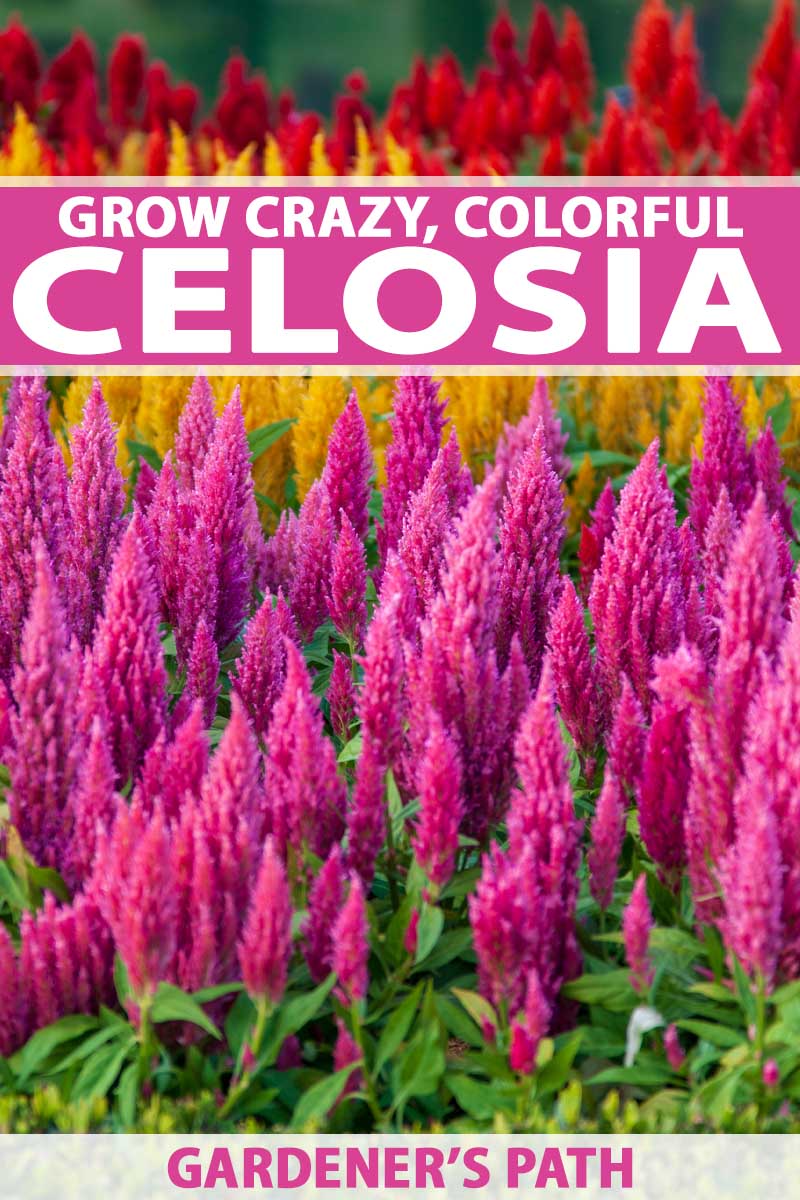
We link to vendors to help you find relevant products. If you buy from one of our links, we may earn a commission.
I squinted while thinking about it. “Hmm, I’m not quite–”
The gentleman’s eyes lit up and he said, “Oh, wait! They look like they’re from a Dr. Seuss book!”
Now my eyes lit up and I said, “Oh, celosia! Here we go!”
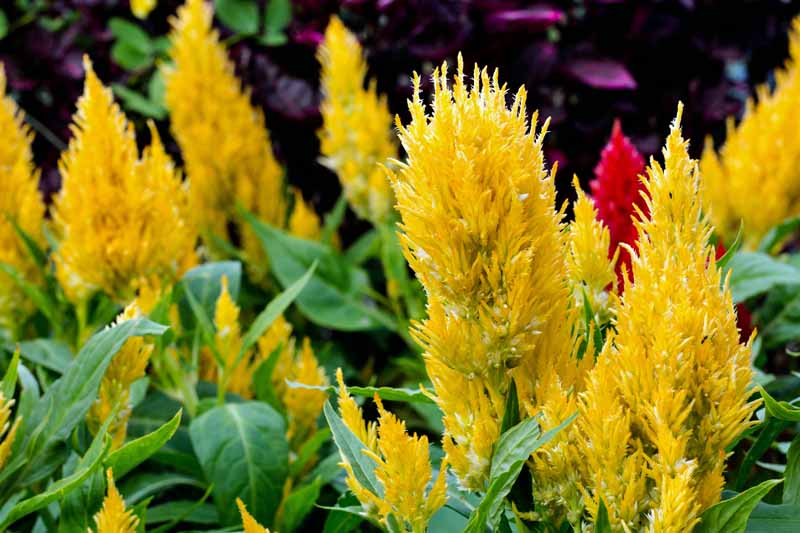
I escorted the customer to the right section of the store and sure enough, we’d found the flowers he was looking for. All he had to say was “Dr. Seuss flower” and I’m sure anyone familiar with celosia would have instantly known what he was referring to.
What You’ll Learn
Fundamentals
Celosia, commonly known as “woolflowers,” are members of the amaranth family. They are edible ornamentals you can add to your garden, and have a taste not unlike spinach. Celosia also contains those minerals and vitamins commonly found in deep-hued leafy greens.
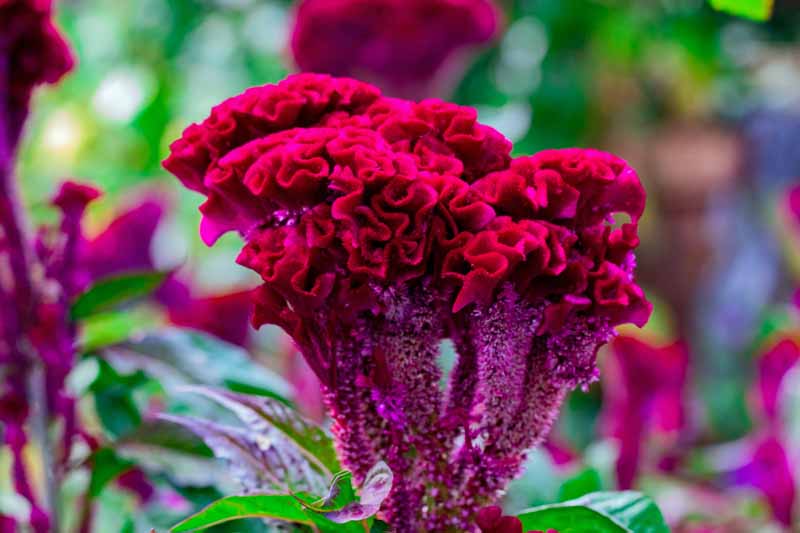
The problem with eating the leaves is that they’re tender and tasty when the plant is young, but turn bitter after blooming… and growing celosia without getting them to flower means you’ll lose the biggest appeal of the plant – their flowers!
Flashy, uniquely-shaped flowers eschew any concept of subtlety. Expect shapes reminiscent of plumed candle flames, or coral, or something resembling a brain, all available in a wide variety of colors.
We’ll take a look at what celosia needs to prosper and be at its best, but here’s a hint to start you off: lots of sun is key!
Good Light and Better Drainage
Sure, woolflowers will grow in partial sun, but they’re at their best in sunny and dry conditions.
Give them plenty of sunlight and a warm location, and they’ll thank you with prolific blooms. But careful attention to their soil and watering requirements is potentially even more important than that sunlight.

Celosia will not tolerate wet feet. That is, these plants do not want to be watered too much, and require soil with excellent drainage. The only celosia I’ve seen that weren’t at their best were those that were over watered, or planted in soils heavy with clay. The plants become limp and languid looking, then practically melt from too much stored up moisture.
Frustratingly, these plants still need to be in soil that is watered regularly. Finding a balance with these flowers can be a tricky endeavor when they’re grown in containers and raised beds. But if you’ve got these plants in quality well-drained soil, they will practically take care of themselves.
I’ve found a measurement of about an inch of rain a week is ideal for woolflowers to prosper, but they can get away with less for a few weeks at a time.

Woolflowers are generally grown as an annual, but in zones 9 to 11 they can be short-lived perennials; expect two or three years out of them before they give up. Luckily, they reseed readily and easily!
Oh Yeah, About That Reseeding…
If you let your woolflowers go through their full bloom cycle and then produce seeds in the garden, watch out for a cadre of replacements the next season! You can prevent this from happening by cutting the spent flower heads before they totally wither up and begin to seed the area surrounding where they were planted.
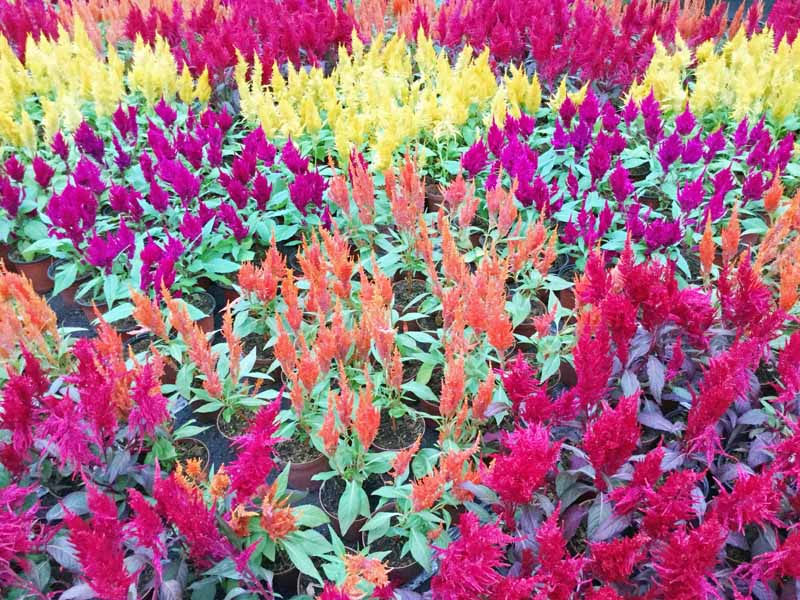
This makes celosia an excellent filler plant for areas that you have a hard time maintaining and want to “let go,” but woolflowers can be a messy choice for areas that are more manicured.
Fortunately, the cut flowers are easily dried and make for interesting additions to dry arrangements. Cut flowers that are on the smaller side and hang them upside down for a period of about two weeks.
Troubles and Problems? Forget About It
A godsend in the life of any gardener is a plant that is resistant to most pests and other obnoxious problems. Celosia is an excellent I-don’t-wanna-care-for-it plant with requirements that are mostly hands-off beyond initial planting.
Resistant to most pests and illnesses, woolflowers are exclusively affected by aphids and mites, but these pests are encountered infrequently. They can also suffer from powdery mildew and fungal infections, but with the right watering practices, these ailments can be avoided.
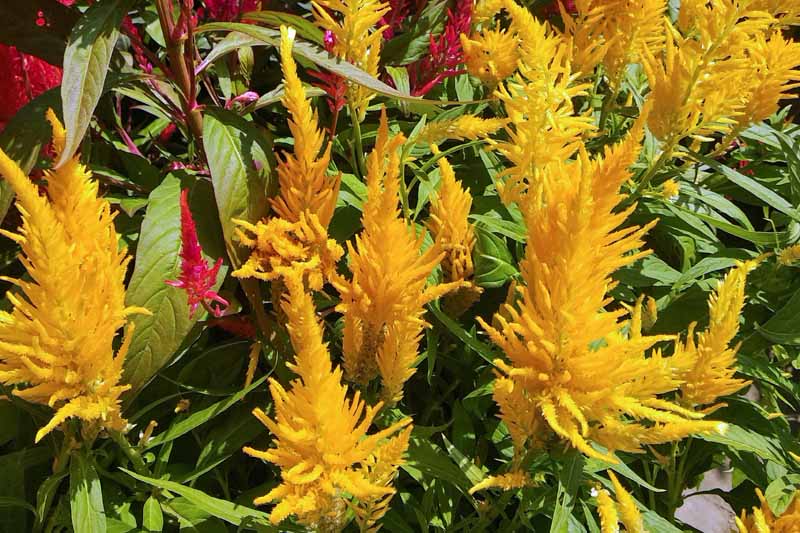
The taller these flowers grow, the more likely they are to need staking to support their heavy flowers. Avoid a tangled mess by using one large stake and tying individual flower stems to it, instead of constructing a fence-like support system.
With minimal issues like these, you can expect to see your celosia bloom from June through – and sometimes beyond – the first frost.
Starting Celosia From Seed
Relatively temperamental when grown from seed, in the outdoors most celosia survives and thrives by producing a lot of seeds to effectively beat lower germination rates. In indoor environments, they can be more than picky about the conditions they’re grown in.
Start yours indoors about four weeks before the last frost date, because these seedlings are very sensitive to cold.
Celosia seeds do not need light to germinate and should be placed under a good quarter-inch of soil. The soil should be consistently moist but never saturated; you can get around this dilemma by using a greenhouse cover over your seed tray. Most trays are sold with one of these, but a piece of plastic wrap works in a pinch.
If these seedlings are allowed to dry out they will die quickly, so keep that soil moist.
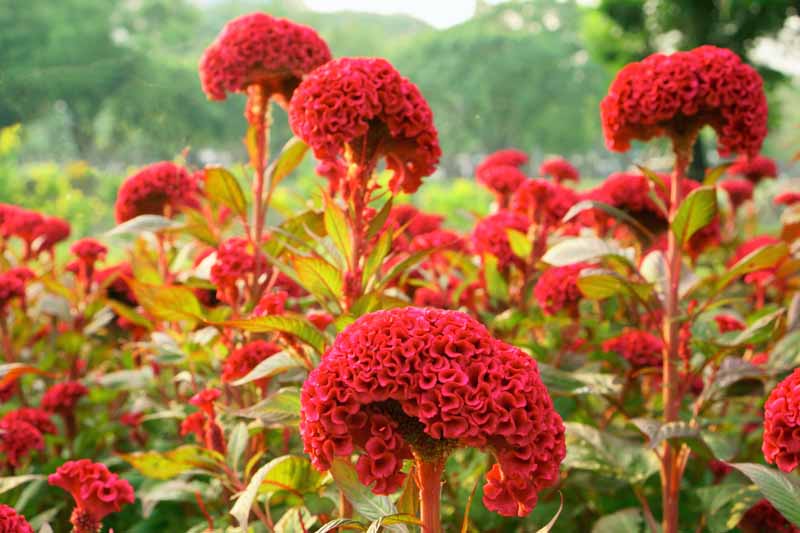
Don’t even think about transplanting these puppies until the danger of a hard frost is gone, or they’ll all take serious damage and may not recover. Once the weather is on your side, you can plant them out about eight inches apart.
The Best Celosia Cultivars
You’ll find three general types of celosia for growing: cockscomb, wheat, and plumed.
Each variety has similar requirements for growing and good plant health, but all three have wildly different appearances.
Cockscomb Celosia
The most striking flower shape celosia produces, these broad and large blooms resemble coral. The flowers are often heavy and may require staking for support, but they’re sure to grab the attention of passersby and make for a great focal point in the garden.
Gypsy Queen
The ‘Gypsy Queen’ has a bold, dark maroon color and a wide fan-shaped flower. That stunning color bleeds into the foliage and makes this ornamental a real showstopper.
Expect it to reach heights of about a foot (8-16 inches) and flower from the late summer into autumn. ‘Gypsy Queen’ also works well in containers and in cut flower gardens.
Red Velvet
The first time I saw the ‘Red Velvet’ cultivar I thought the flowers were experiencing fasciation, but nope! Just a beautiful and bold crimson flower to enjoy in your containers or yard.
You’ll want to place ‘Red Velvet’ as the centerpiece of your annual displays. This variety reaches 3-4 feet in height with large blooms! Taller than many other cultivars, it is an excellent choice on which to base an entire color palette for accompanying plantings.
Fan Dance Scarlet
Another broad, fan-shaped flower, the ‘Fan Dance Scarlet’ has a (slightly) more restrained appearance in terms of color and intensity.
Because it reaches a height of about three feet, you can safely plant these eye-openers as the rear “wall” of color for your garden beds. And the stems are strong enough that no staking is required. This variety loves hot and dry conditions.
King Coral
If purple brain/coral-looking flowers are more up your alley, the ‘King Coral’ is for you. Wow, what a color!
It reaches a modest height of about ten inches, but the blooms themselves can reach an incredible twelve inches in diameter!
I’ve had the best luck planting these in masses rather than in rows; you can’t go wrong with half a dozen growing in their own pocket of your garden beds.
Crested Armor
Is variety the spice of your life? Then take a gamble on what colors you’re going to produce with this ‘Crested Armor’ mix of seeds.
Celosia flowers are like pansies in that a variety of colors work just as well as a single selection. The red, purple, yellow, and orange color palette of the ‘Crested Armor’ cultivar forms a pleasing-to-the-eye explosion of color that is in perfect harmony.
This selection reaches 12-16 inches and works well as a bedding planting in mass groups, or for butterfly gardens. It’s another option that’s ideal for hot climates.
See it now on True Leaf Market!
Wheat-Type Celosia
You’ll find less of a selection in the wheat variety than other categories, but the few that are available are no less striking, even if they’re on a more limited spectrum of color. Better yet, I’ve seen the wheat variety grow longer into and through the fall than either cockscomb or plumed types.
Asian Garden
The ‘Asian Garden’ cultivar works as an excellent hedge of flowers to line the driveway or a sidewalk. A neighbor has these growing and they’ve bloomed nonstop through the season since the early summer.
Better yet, the foliage takes on a purplish hue in cooler weather. Make room for this cultivar – it will reach heights floating at and above three feet!
This selection works equally well for plantings, cutting gardens, and as dried flowers.
Forest Fire
A wonderful red, the ‘Forest Fire’ type is a bit more modest in its height, reaching up to 30 inches. It tends to develop yellowish-green leaves that contrast delightfully with the flowers.
‘Forest Fire’ Wheat-Style Celosia
This newer selection is the perfect color to transition with the rest of the landscape from late summer into fall.
See it now on True Leaf Market!
Flamingo
Another shorter variety coming in at around the two-foot mark, the ‘Flamingo Series’ looks like you’d expect it to. I mean, you don’t name something after flamingos without good reason, right?
‘Flamingo’ Wheat-Style Celosia
The flowers react to intense heat by turning to shades of white before pushing out another round of purplish color as the fall takes over the summer.
This selection also makes for beautiful cut flowers.
See it now on True Leaf Market!
Plumed-Type Celosia
I’m most partial to the plumed variety because they remind me so much of a Dr. Seuss illustration, and I’ve always been a Seuss fan.
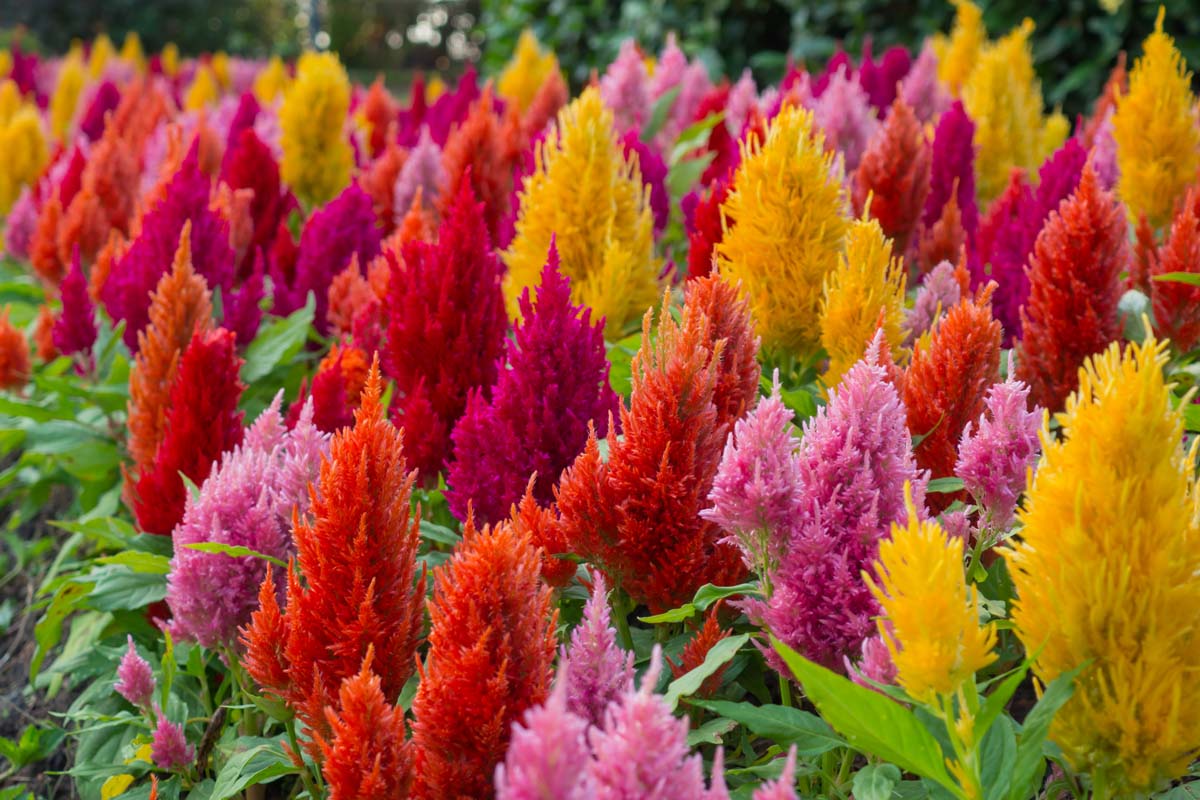
I squeeze them into containers when I can, and find they mix well with French marigolds.
Arrabona Red
The ‘Arrabona Red’ may be my favorite of the plumed cultivars.
This dwarf variety produces strong and sturdy plants that reach a height of about sixteen inches, and has a striking and memorable effect on the viewer. With this shade of red and orange, it’s difficult to forget! And it’s excellent for drought-prone and hot climates.
This Fleuroselect Gold Medal winner is a great choice for cut flowers, as well as use in beds and borders, and in containers. It is also perfect for drying.
Fresh Look
For more of a true red, try the ‘Fresh Look Red’ variety. These appear to be a bit bushier than the ‘Arrabona’ and have a richer color, but they reach a similar height of about sixteen inches.
Looking for something a little different? You’ll get a variety of colors with this ‘Fresh Look’ mix, but each one is a winner.
This series is available in four different colors and a mix via True Leaf Market. My favorites in here are the yellows and the light oranges.
Plumed Castle
For an even shorter cultivar that offers a mix of colors, try this ‘Plumed Castle’ mix.
They’ll stick to heights just over six inches tall but offer the same variety of colors.
See it now on True Leaf Market!
Get to Gardening!
It may not be a flower for the frail, but for those with sense of flair and whimsy, celosia is just what the doctor ordered. As long as you provide the sunlight it needs and don’t keep it oversaturated, these flowers will provide long-lasting color and undeniable interest in the garden.
Watch them, cut and dry them, and even eat the leaves – there’s little celosia can’t do!
Feel free to share your experience with these lovely flowers in the comments below. And if you want more colorful annual flower choices, be sure to check out some of our other growing guides, such as:
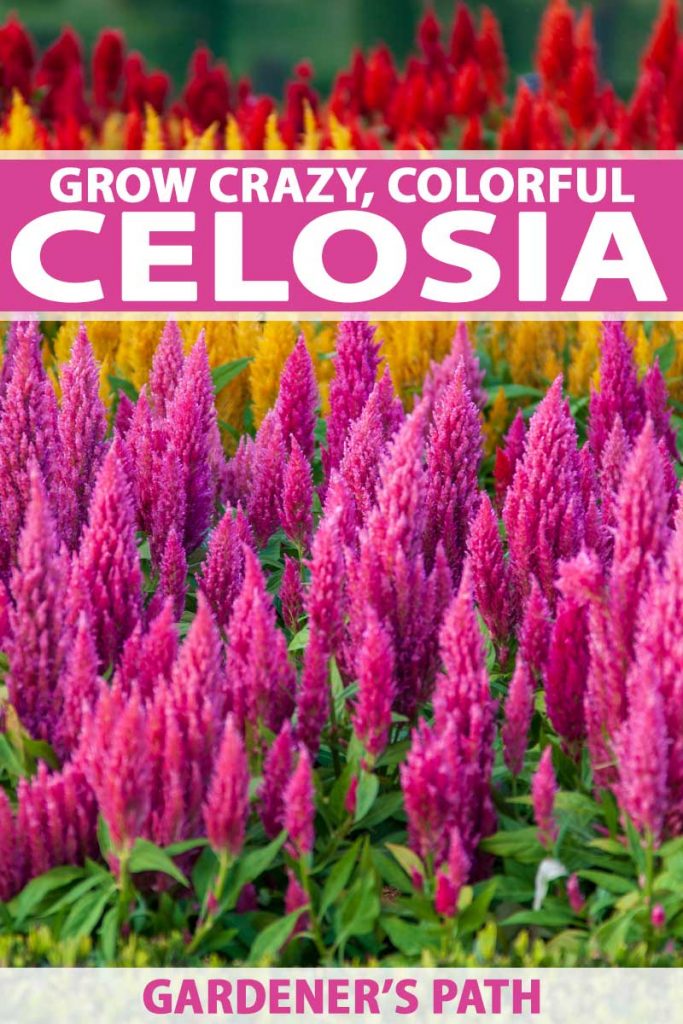
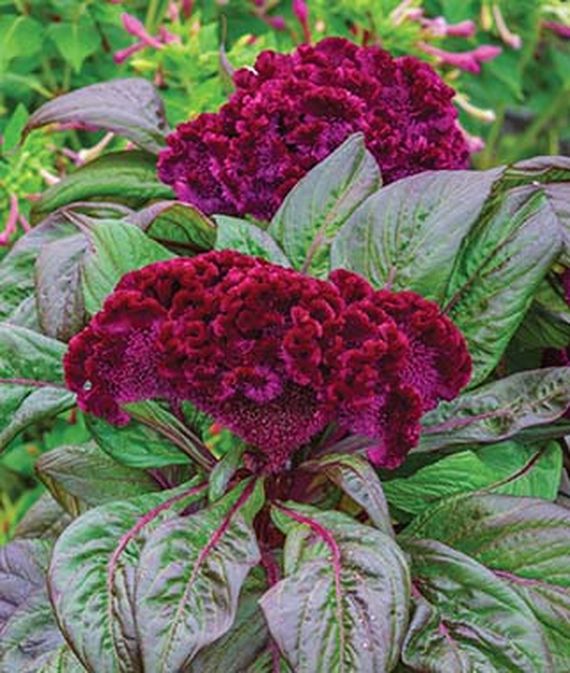
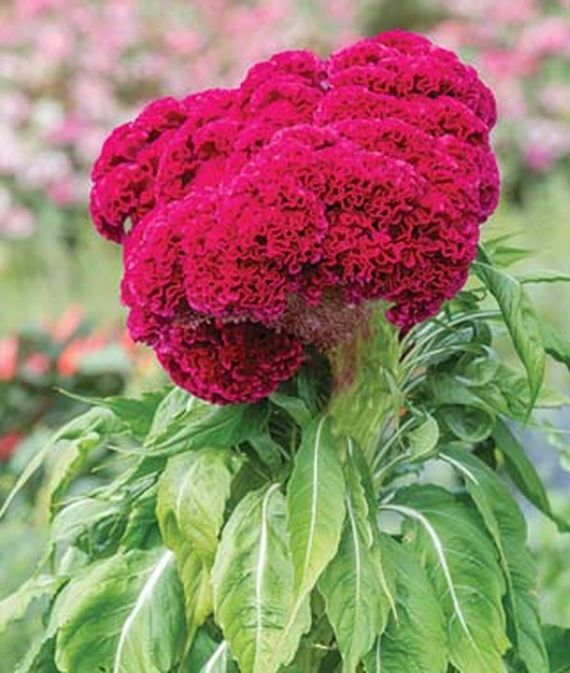
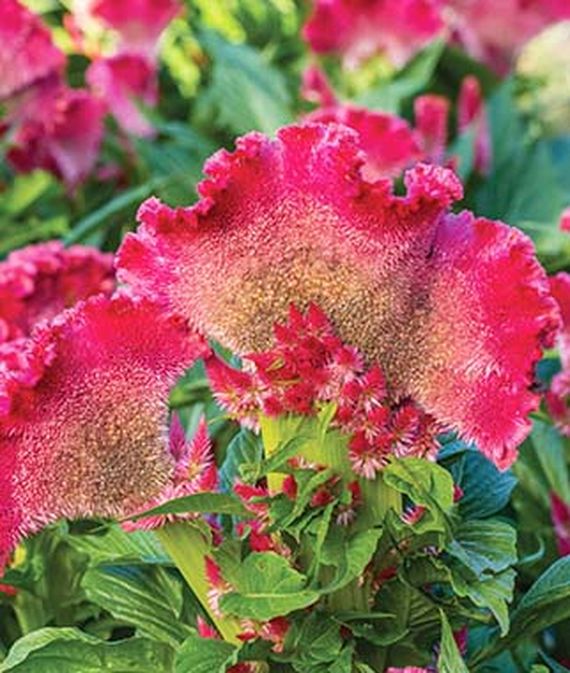
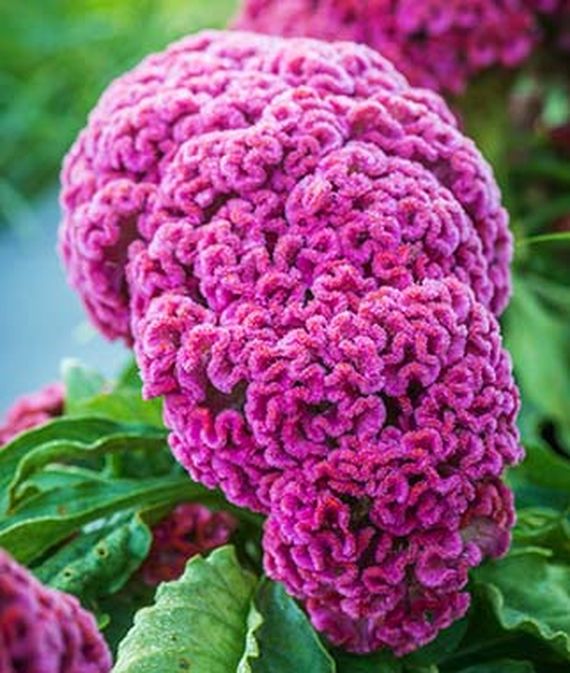
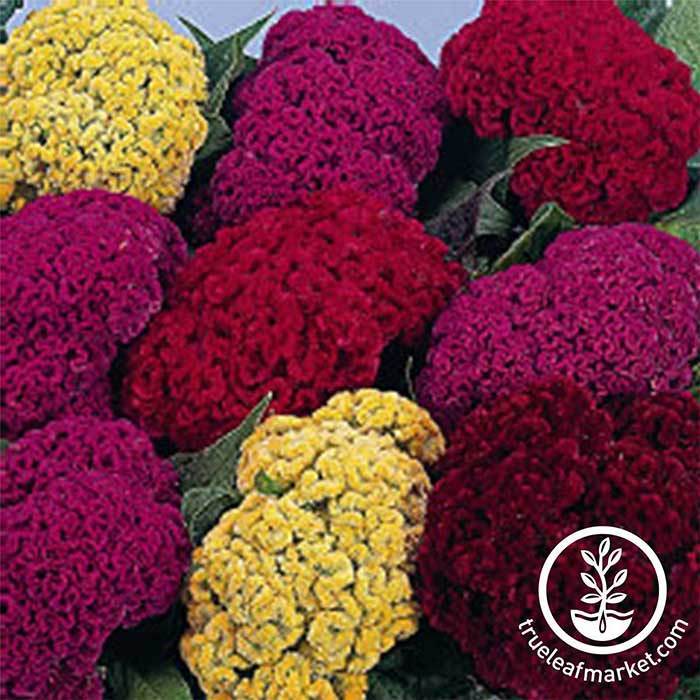
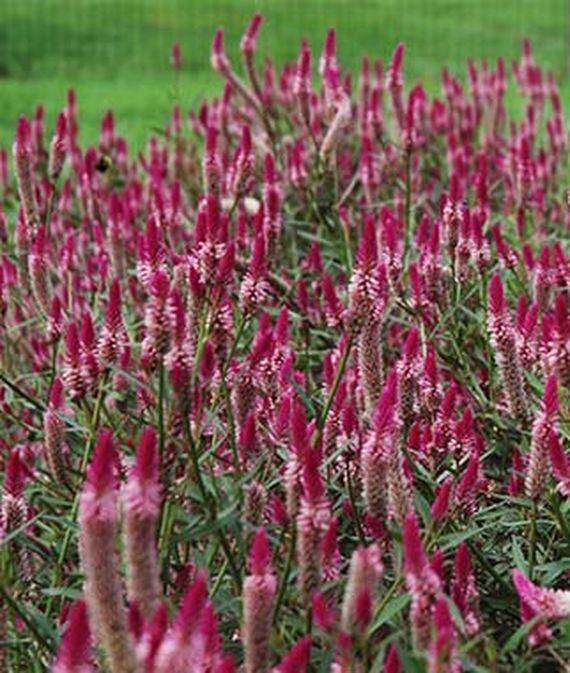

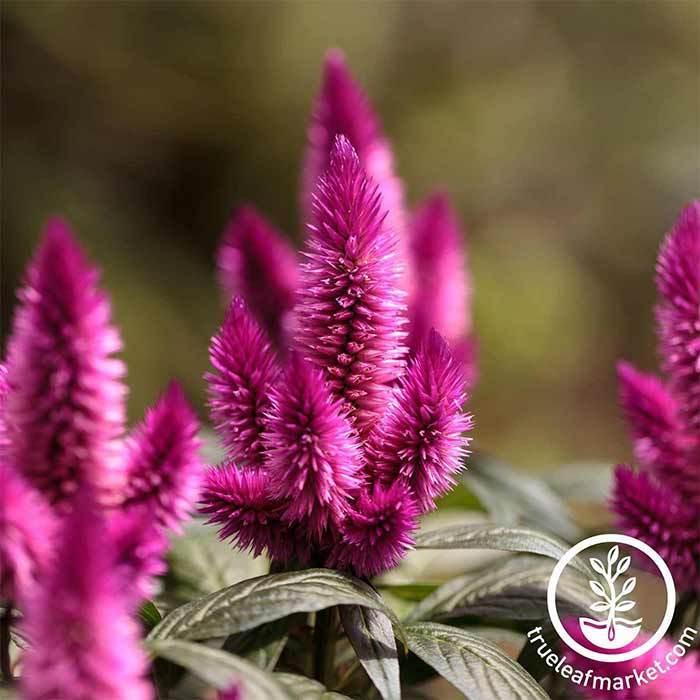
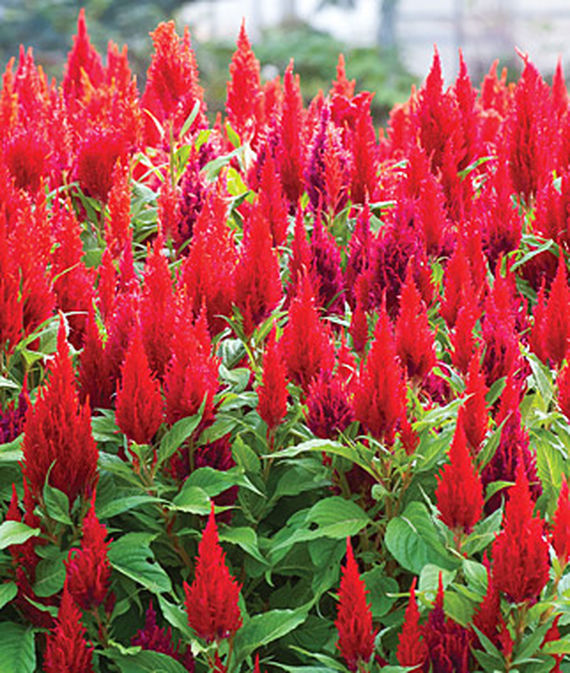
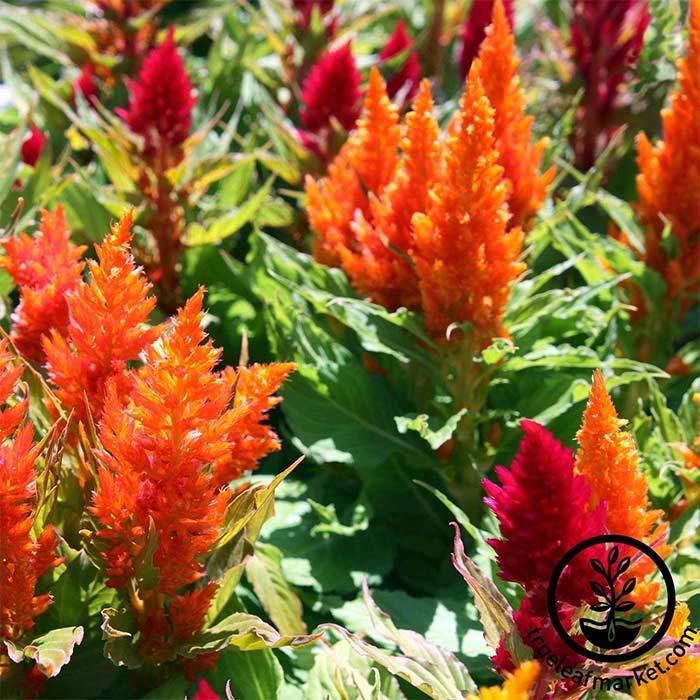
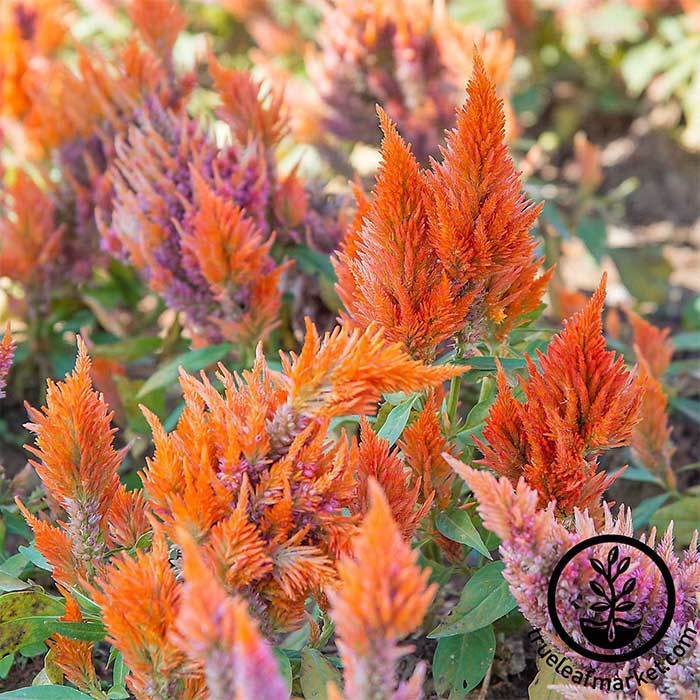
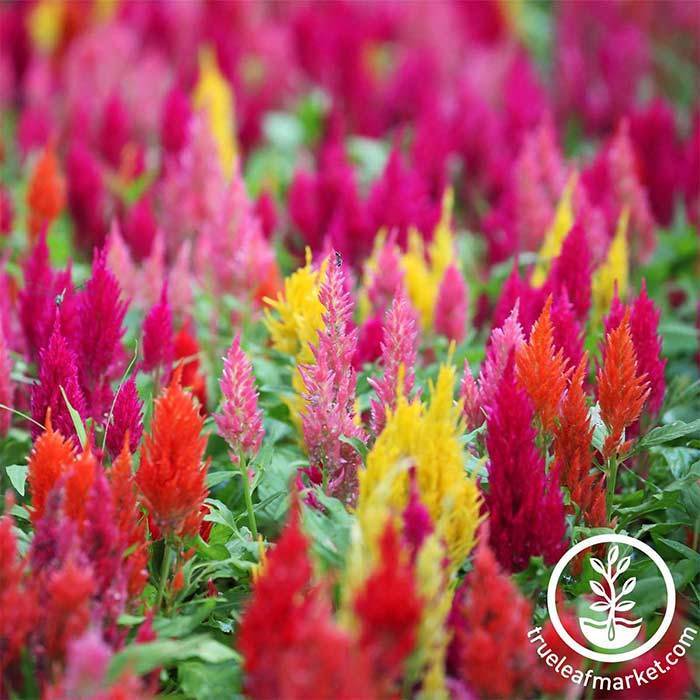
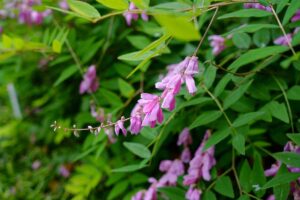
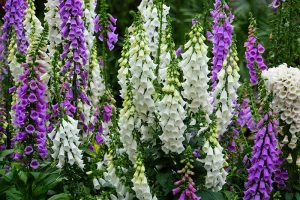
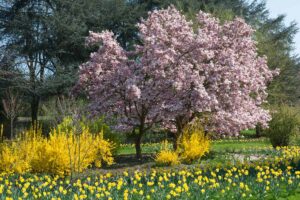
Thanks for all the great information! I’m trying to grow celosia for the first time and your article has been most helpful.
Glad it’s been helpful Steve, and I hope the flowers have taken off for you in the summer heat! Feel free to share some pictures of their progress.
I have some plumed celosia. Mine are not happy because either they are at the end of their blooming or I have watered them too much!! Ugh! Their blooms are a bit drab looking & not as brilliant. It may be going to seed is my guess. Any thoughts? Same things I dealt with last year.
Hey, Fran, sorry to hear about the celosia! It’s most likely an issue of watering a bit too much. Your best bet is to cut back on that and give them a drink when they need it. You can probably deadhead the celosia and remove the unappealing blooms, then give the plant a little burst with some fertilizer (any all-purpose flowering plant fertilizer will do). You should be able to get at least one more lengthy bloom cycle out of them. Let me know how it works for you!
I bought these flowers last year, planted them and they took off! This year I have more than double the number of flowers I had last year and they’re thriving with minimal watering. However, some are so tall (and full of bees) that I’d like to clip them down… but I don’t want to lose the plants. Any suggestions on pruning?
Where are you located, Victoria? And what variety are you growing? Celosia plants typically grow as annuals unless you’re in hardiness zone 10 or 11, so it’s unlikely that the same plants will return if you cut them back significantly. Since it sounds like the bees are happy, our best advice would be to leave them alone! You can deadhead spent blooms if you don’t want to leave them on the plants until they dry to collect the seeds, and this will encourage continued blooming if done early enough in the season. Once fall rolls around, the bloom cycle will… Read more »
“The first time I saw the ‘Red Velvet’ cultivar I thought the flowers were experiencing fasciation, but nope! Just a beautiful and bold crimson flower to enjoy in your containers or yard.”
What do you mean by “experiencing fasciation”?
Fasciation is an instance of abnormal growth, and you see it often in plants like Gerber daisies where it looks like they have a giant, mutated flower head. This looks very similar to celosia flowers.
I bought these and potted them the first of June when they were about 3-4”. They are still growing and reproducing into October. I did have some die and thanks to your article I know it’s because of too much water. I love these flowers!
I bought some celosia at the store and brought them home and just got them in the ground. Will they survive the winter this late? Anything I can do to help them to make it through the winter, covering or keep watering so they take root? Help please, fast. Thanks
Hi Mary, This is a common problem when nurseries are looking to sell their remaining stock at the end of the season. Unfortunately, celosia favors warm, humid conditions. Where are you located? Unless you’re in Zone 9-11, your plants aren’t likely to make it through the winter and they are usually grown as annuals outside these zones. If you can coax them along through the end of the season so they finish producing flowers that are allowed to go to seed, they may reseed themselves and produce new plants next season. You can also collect the seeds, for replanting in… Read more »
I live in Northern NJ and the soil in my property has a lot of lime. For the first time I bought a celosia flower plant (gorgeous) and I want to have it all year round. How do you suggest I care for it as we enter the cold months.
Did you add the lime to your soil, Luz, or is it naturally occurring? Its effectiveness as an amendment to reduce the acidity and increase the pH of soil usually runs its course in a couple of years, and I would recommend testing your soil to check its pH. Celosia does best in slighly acidic soil (6.0-6.5) so it typically won’t respond well to the addition of a lot of lime. Adding compost can help to lower pH and improve the health of the soil in your garden beds, so you might choose to work some into the soil when… Read more »
Hello Matt, I live in the sub tropical area of the Sunshine Coast, 60 miles north of Brisbane Australia. I have on at least 6 attempts tried to grow my Dragons Breath Celosias from the seeds I recovered from my last seasons plants which were bought from a local nursery. My seeds have all germinated but once they produce 2 reddish leaves and grow to a maximum height of half an inch they stop growing. They are alive but do not seem to grow any further. Can you suggest where I may be going wrong?
Is there’s a chance that you’re planting them too close together, or in depleted soil? If they’re too cold or if roots don’t have room to expand, these issues may also prevent them from thriving.
We live in Florida for the winter. I bought some Celosia to go in between my succulents to give some color. Will they bloom during the winter?
Had to show my celosia which grew as volunteers, reseeded from the year before. I didn’t do anything but water it.
Wow, this is gorgeous, Susan! I don’t think I’ve ever seen one grow this tall!
This is mine also lol